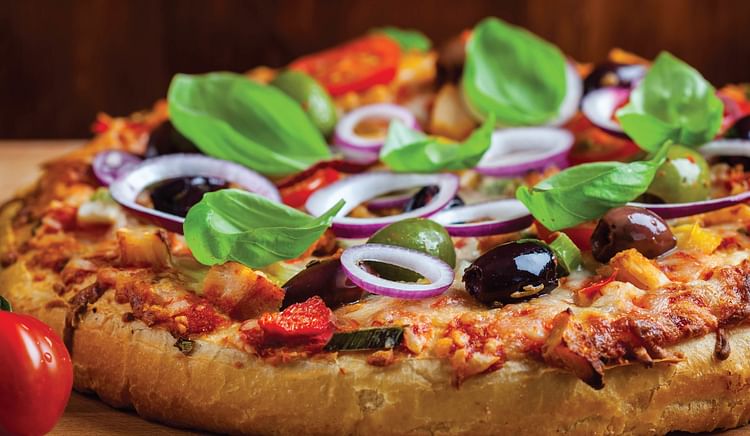
Pizza – the quintessential delivery dish and Italy’s official brand ambassador. All right, I made the second one up. Puns aside, it is impossible to deny the sweeping impact pizza has had on the culinary world. From roadside pizza carts and ubiquitous delivery boxes to gourmet pies charred in wood-fired ovens at tiny restaurants, no other dish can match the versatile acceptability of a pizza.
A simple combination of bread, sauce, cheese and toppings – the charm of pizza lies in its simplicity. You can make a basic pizza in your kitchen oven or on your gas stove, even as maestros fuss over the yeast in dough or wood in their kilns. Some like to enjoy minimalistic pleasures of a textured crust and stringy cheese, while for others, it is all about the toppings. Ever wondered where the pizza came from? Let us trace back the pie that took over the world.
The word pizza might derive from the Graeco-Latin word pikte for fermented pastry, which would not be surprising, as flatbreads have been baked for millennia. When archaeologists dug up the well-preserved volcanic ruins at the Greek city of Pompeii, they discovered evidence of flatbread topped with olive oil, herbs and cheese being baked in brick kilns not too dissimilar from modern-day pizza ovens. So what is missing in these ancient recipes?
Tomatoes. Ostracised from respectable kitchens during the Age of Discovery due to their distinctly bright colour, tomatoes were initially relegated to tabletop ornamentation. A member of the nightshade family, which also includes tobacco and eggplant, they were rumoured to be poisonous and unfit for consumption.
It is the working class of Italy who began using tomatoes in their humble kitchens – frying, saucing and eventually adding them to their focaccia dough before baking it with cheese and olive oil. Thus, the pizza as we know it was born. Easy to carry and eat, it soon became a hit throughout the region. So much so that, when the royal couple visited the city of Naples in the 19th century, they solicited their share of the pie. The man of the moment, Raffaele Esposito of Antica Pizzeria Port’Alaba, seized the opportunity to present the monarchs a Pizza in honour of the royal colours of Italy – green (basil leaves), white (mozzarella) and red (tomato sauce). They loved it so much that Esposito named the pizza after her majesty, Queen Margherita.
While the pizza was born in Italy, the pie truly reached the heights of its glory in America. In a journey befitting the American dream, pizzas sailed across the Atlantic at the turn of the 20th century on the backs of hard-working immigrants from Southern Italy. Convenient and communal, they were perfect for factory workers, families and baseball teams. When Prohibition was lifted in the 30s, pizzerias were around all over the US to soak in all that alcohol. The pie got another push when triumphant GIs returning from the European theatre sought out pizzas that had tided them through the war. It entered American pop culture and, soon, someone invented the gas pizza oven. By the 60s, pizzas were being industrially baked, packed and sliced across the country. Chains such as Dominoes and Pizza Hut popularised (and standardised) it as fast food around the world, and gave many of us (myself included) our first slice of pizza.
The Indian connection
Although its immense popularity in India might only be two decades old (Dominoes and Pizza Hut launched in 1996), you will be surprised to know that our connection goes back centuries. For many, the highlight of a pizza is tearing apart the stringy mozzarella cheese from the crust. True mozzarella cheese is made from the fat-rich milk of buffaloes; however, the animal is not native to Italy. Historians have long hypothesised the import of water buffaloes from India during the ancient Indo-Greek trade. A much more assertive link is the repopulation of Italian farms with Indian water buffaloes after the retreating Nazis slaughtered Italian herds during the Second World War. A recent BBC news piece also highlights how the hard-working, dairy-loving Sikh community in Italy is keeping the cheese industry alive. So do cherish its history and the Indian connection the next time you chew on a slice of pizza.
Follow Amit @iamitp

